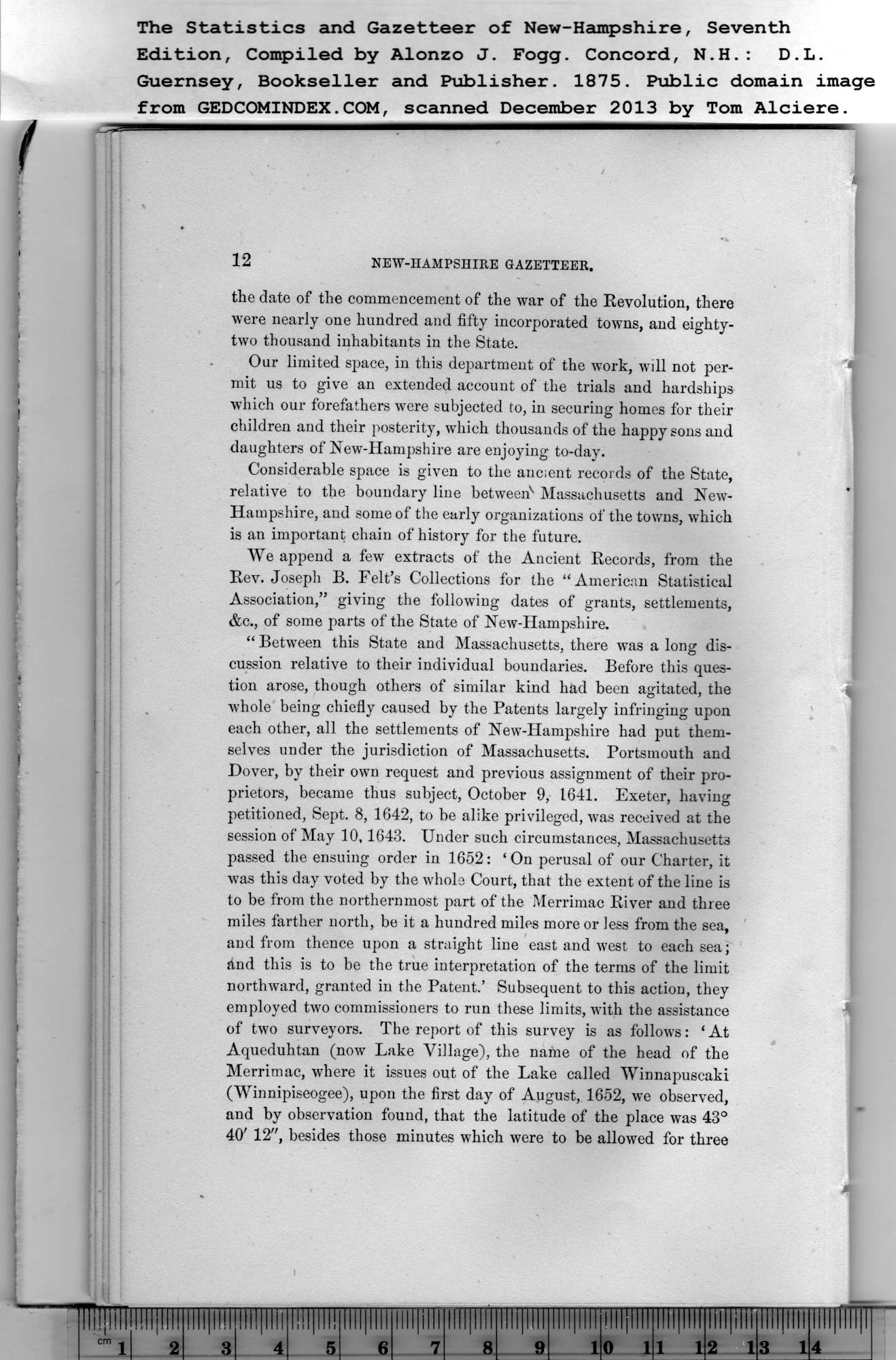|
12 NEW-HAMPSHIRE GAZETTEER.
the date of the commencement of the war of the Revolution, there
were nearly one hundred and fifty incorporated towns, and eighty-
two thousand inhabitants in the State.
Our limited space, in this department of the work, will not per-
mit us to give an extended account of the trials and hardships
which our forefathers were subjected to, in securing homes for their
children and their posterity, which thousands of the happy sons and
daughters of New-Hampshire are enjoying to-day.
Considerable space is given to the ancient records of the State,
relative to the boundary line between Massachusetts and New-
Hampshire, and some of the early organizations of the towns, which
is an important chain of history for the future.
We append a few extracts of the Ancient Records, from the
Rev. Joseph B. Felt’s Collections for the “American Statistical
Association,” giving the following dates of grants, settlements,
&c., of some parts of the State of New-Hampshire.
“ Between this State and Massachusetts, there was a long dis-
cussion relative to their individual boundaries. Before this ques-
tion arose, though others of similar kind had been agitated, the
whole being chiefly caused by the Patents largely infringing upon
each other, all the settlements of New-Hampshire had put them-
selves under the jurisdiction of Massachusetts. Portsmouth and
Dover, by their own request and previous assignment of their pro-
prietors, became thus subject, October 9, 1641. Exeter, having
petitioned, Sept. 8, 1642, to be alike privileged, was received at the
session of May 10, 1643. Under such circumstances, Massachusetts
passed the ensuing order in 1652: ‘ On perusal of our Charter, it
was this day voted by the whole Court, that the extent of the line is
to be from the northernmost part of the Merrimac River and three
miles farther north, be it a hundred miles more or less from the sea,
and from thence upon a straight line east and west to each sea;
and this is to he the true interpretation of the terms of the limit
northward, granted in the Patent.’ Subsequent to this action, they
employed two commissioners to run these limits, with the assistance
of two surveyors. The report of this survey is as follows: ‘At
Aqueduhtan (now Lake Village), the name of the head of the
Merrimac, where it issues out of the Lake called Winnapuscaki
(Winnipiseogee), upon the first day of August, 1652, we observed,
and by observation found, that the latitude of the place was 43°
40' 12", besides those minutes which were to be allowed for three
PREVIOUS PAGE ... NEXT PAGE
This page was written in HTML using a program written in Python 3.2
|
